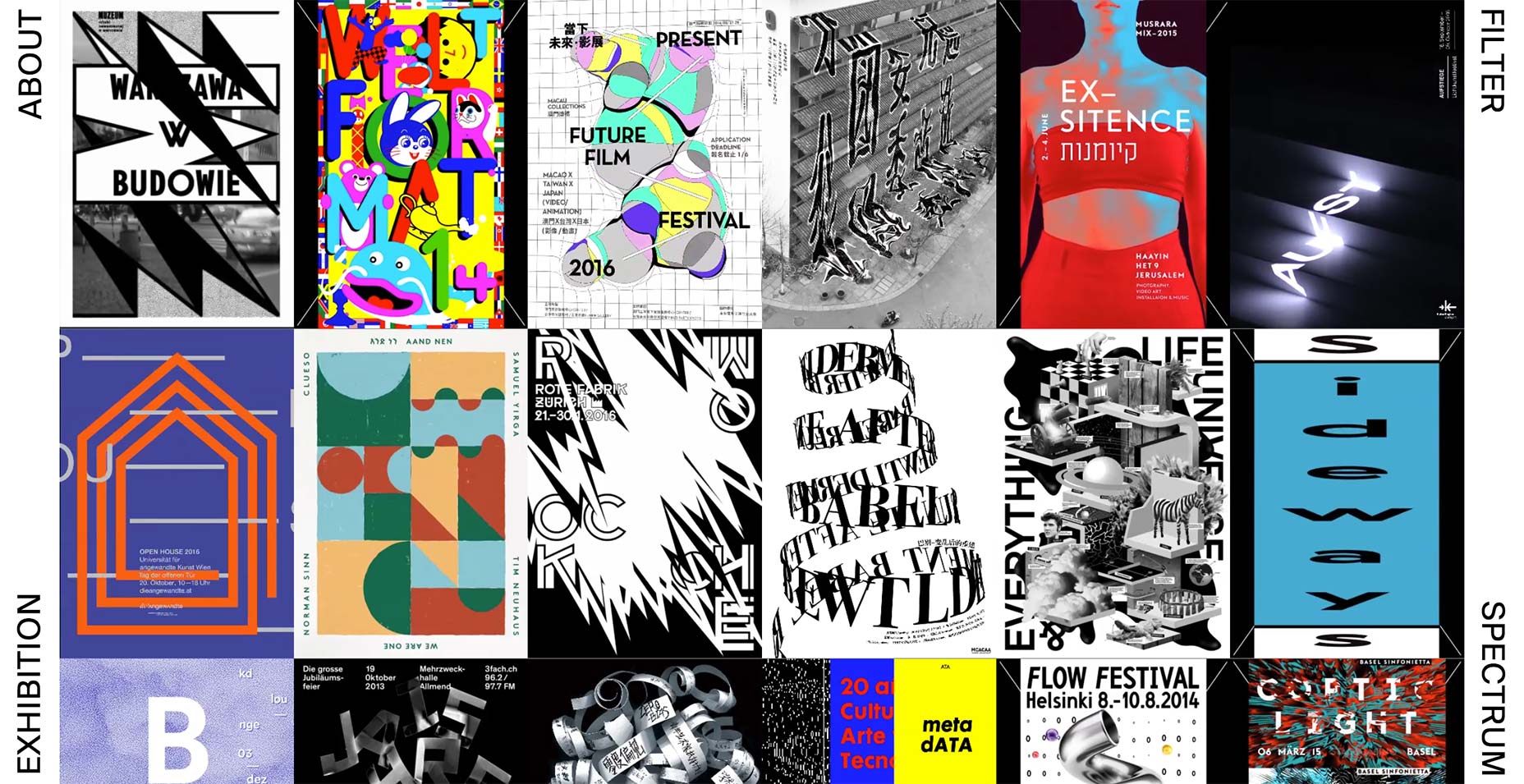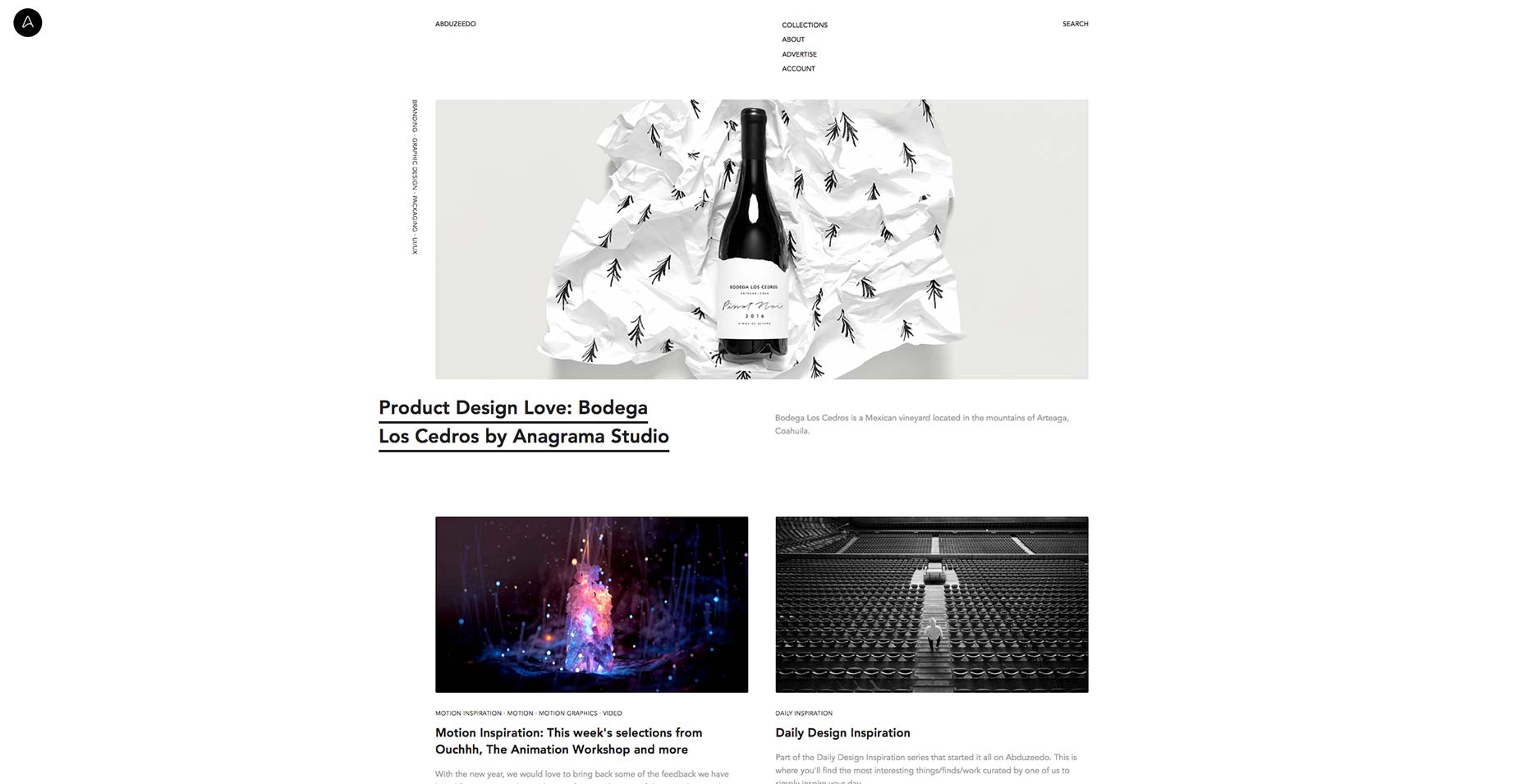Should You Follow Design Trends?
Trends often do little to push design forward or improve user experience

 The question therefore presents itself as to why trends exist. It’s not to push an industry forward, nor is it to improve the final output for users, whether it be in fashion or web design. Why trends exist is to maintain visual interest, not just for consumers and clients, but for the designers themselves too.
If we take web design as a case study for trends, we can see that we have essentially stripped websites back of their detailing. While currently this is visually appealing, since it’s on-trend, it actually does little to improve the experience for the end user. This is the website design for Abduzeedo in 2010, via the Wayback Machine.
The question therefore presents itself as to why trends exist. It’s not to push an industry forward, nor is it to improve the final output for users, whether it be in fashion or web design. Why trends exist is to maintain visual interest, not just for consumers and clients, but for the designers themselves too.
If we take web design as a case study for trends, we can see that we have essentially stripped websites back of their detailing. While currently this is visually appealing, since it’s on-trend, it actually does little to improve the experience for the end user. This is the website design for Abduzeedo in 2010, via the Wayback Machine.
 And here is Abduzeedo in 2018. It follows a number of popular trends; from ridding of any design detailing such as gradients, to replacing key elements like search with less-intuitive solutions.
And here is Abduzeedo in 2018. It follows a number of popular trends; from ridding of any design detailing such as gradients, to replacing key elements like search with less-intuitive solutions.
 Is it more usable, or simply more on-trend? It’s harder to scan the latest article posts, more difficult to understand the content hierarchy, and lacking the wonderful, contrasting design visuals and details included in the earlier version.
Abduzeedo is not alone in its reductionist techniques, and similar transitions have occurred across the majority of websites over this period. But what if it had simply remained the same? I can’t speak for other Abduzeedo loyalists, but for me a great design is near-timeless, even in such a fast-paced industry.
Some sites have indeed remained the same over long periods. They have found a structure and design language which resonates with users’ needs. Rather than chopping and changing as the trends grow and subside, they stay firm, trusting in their design decisions and reasoning behind them. An excellent example is The Drudge Report.
Is it more usable, or simply more on-trend? It’s harder to scan the latest article posts, more difficult to understand the content hierarchy, and lacking the wonderful, contrasting design visuals and details included in the earlier version.
Abduzeedo is not alone in its reductionist techniques, and similar transitions have occurred across the majority of websites over this period. But what if it had simply remained the same? I can’t speak for other Abduzeedo loyalists, but for me a great design is near-timeless, even in such a fast-paced industry.
Some sites have indeed remained the same over long periods. They have found a structure and design language which resonates with users’ needs. Rather than chopping and changing as the trends grow and subside, they stay firm, trusting in their design decisions and reasoning behind them. An excellent example is The Drudge Report.
 It’s not following a minimalist or brutalist design trend. It has looked like this for the best part of two decades. Users of the site love the simplicity and consistency of the design. In an industry defined by cluttered news websites with breaking news alerts, The Drudge Report has taken a step back from the race for user’s attention and stayed true to its original purpose.
[pullquote]Much of it can be traced to boredom[/pullquote]
Of course there are exceptions over this time, namely with the way trends contribute to design systems like Material Design, which continues to develop a current and user-friendly design language for all to use and benefit from. It’s implemented throughout Google’s products, improving user experience through well-defined user interface assets and consistency. But on the whole, design trends are largely about tweaking styles continuously to provide something new to users, consumers, clients, and designers that is fresh and unique. Much of it can be traced to boredom, not just from consumers, but designers too. Who wants to enter a creative industry and turn out the same style app designs, or websites, time and time again? Cityscapes, computers, the web, mobile apps, clothing, they’d all be samish, and lacking in a great deal of emotion or feeling. Not to mention, a market economy is built upon companies continuing to present new products and new designs, regardless of how good an existing one is.
Designers have to consider whether trends are a primary consideration, or whether the user experience should define the styles and direction. This largely comes down to the sub-industry and whether a design is primarily visual or user-orientated. Aspects such as logo or poster design have much greater scope to follow these trends.
Digital product design should always place the user experience over conforming to trends. In many ways trends should be entirely redundant in these cases and have little-to-no influence on design decisions.
It’s not following a minimalist or brutalist design trend. It has looked like this for the best part of two decades. Users of the site love the simplicity and consistency of the design. In an industry defined by cluttered news websites with breaking news alerts, The Drudge Report has taken a step back from the race for user’s attention and stayed true to its original purpose.
[pullquote]Much of it can be traced to boredom[/pullquote]
Of course there are exceptions over this time, namely with the way trends contribute to design systems like Material Design, which continues to develop a current and user-friendly design language for all to use and benefit from. It’s implemented throughout Google’s products, improving user experience through well-defined user interface assets and consistency. But on the whole, design trends are largely about tweaking styles continuously to provide something new to users, consumers, clients, and designers that is fresh and unique. Much of it can be traced to boredom, not just from consumers, but designers too. Who wants to enter a creative industry and turn out the same style app designs, or websites, time and time again? Cityscapes, computers, the web, mobile apps, clothing, they’d all be samish, and lacking in a great deal of emotion or feeling. Not to mention, a market economy is built upon companies continuing to present new products and new designs, regardless of how good an existing one is.
Designers have to consider whether trends are a primary consideration, or whether the user experience should define the styles and direction. This largely comes down to the sub-industry and whether a design is primarily visual or user-orientated. Aspects such as logo or poster design have much greater scope to follow these trends.
Digital product design should always place the user experience over conforming to trends. In many ways trends should be entirely redundant in these cases and have little-to-no influence on design decisions.
Read Next
3 Essential Design Trends, November 2024
Touchable texture, distinct grids, and two-column designs are some of the most trending website design elements of…
20 Best New Websites, October 2024
Something we’re seeing more and more of is the ‘customizable’ site. Most often, this means a button to swap between…
Exciting New Tools for Designers, October 2024
We’ve got goodies for designers, developers, SEO-ers, content managers, and those of you who wear multiple hats. And,…
15 Best New Fonts, September 2024
Welcome to our roundup of the best new fonts we’ve found on the web in the previous four weeks. In this month’s edition…
By Simon Sterne
3 Essential Design Trends, October 2024
This article is brought to you by Constantino, a renowned company offering premium and affordable website design
You…
A Beginner’s Guide to Using BlueSky for Business Success
In today’s fast-paced digital world, businesses are always on the lookout for new ways to connect with their audience.…
By Louise North
The Importance of Title Tags: Tips and Tricks to Optimize for SEO
When it comes to on-page SEO, there’s one element that plays a pivotal role in both search engine rankings and user…
By Simon Sterne
20 Best New Websites, September 2024
We have a mixed bag for you with both minimalist and maximalist designs, and single pagers alongside much bigger, but…
Exciting New Tools for Designers, September 2024
This time around we are aiming to simplify life, with some light and fast analytics, an all-in-one productivity…
3 Essential Design Trends, September 2024
September's web design trends have a fun, fall feeling ... and we love it. See what's trending in website design this…
Crafting Personalized Experiences with AI
Picture this: You open Netflix, and it’s like the platform just knows what you’re in the mood for. Or maybe you’re…
By Simon Sterne
15 Best New Fonts, August 2024
Welcome to August’s roundup of the best fonts we’ve found over the last few weeks. 2024’s trend for flowing curves and…
By Ben Moss















